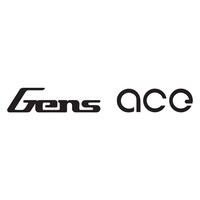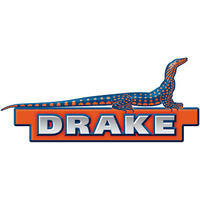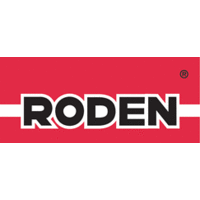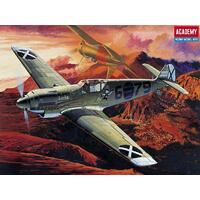
Roden 1/144 Lockheed C-5M Super Galaxy Plastic Model Kit
$149.00
Description
In 1964, the US Air Force Command issued requests to manufacturers for a new super-heavy jet aircraft, which could lift a payload of 100 tons. The Lockheed company, which had a vast experience in building large transport planes, was one of the first to respond, offering the concept of an aircraft with a hinged nose, which would greatly facilitate the loading of heavy equipment into the cargo compartment. In the middle of 1965 Lockheed was recognized as the winner and given an order for the manufacture of 58 aircraft with an option for 57 more. On March 2, 1968 the first aircraft, officially named the C-5A Galaxy, was presented to the public and honored guests, among whom was President Johnson. Testing the giant new machine lasted until the middle of 1969 under an accelerated program, and Lockheed was already fully prepared for series production, but suddenly the justification for the C-5A was questioned in the country's Congress. The cost of one aircraft exceeded 60 million dollars, as against 40 previously announced - and both sums in those days were more than startling. But ultimately a compromise was found - instead of 115 C-5As, which might have been built from the total project funds allocated, the contract was reduced to 81 aircraft. Construction of this series lasted until mid-1973 and the various contractors fully complied with the order. Another factor that weighed the scales in favor of the expediency of the C-5, was the military conflict in Vietnam. The US forwarded an incredible amount of weaponry, and some of the equipment, such as heavy helicopters or heavy howitzers could only be carried by the C-5A at that time. With the end of the Vietnam War the fate of the C-5 was questioned again - the US press were highly critical of the Pentagon's bloated budget, and the C-5 in particular as an example of inefficient waste of taxpayers' money". Despite the extreme degree of public criticism and even the consideration of the issue in Congress, the program for the construction of new super-heavy aircraft was not canceled, but the funding levels for the C-5 development plan were significantly reduced by the federal government. In 1981, the United States was led by Ronald Reagan, a politician who decided to radically change the role of his country in the world order. One of his priorities was to significantly increase defense spending to support the US presence in all parts of the world where the political situation demanded it. Of course, the question of building additional numbers of new cargo aircraft for these requirements was more than relevant. Lockheed had mysteriously managed to keep in being all the construction equipment for the giants, and thus reviving their production did not require significant expenditure of money or time. In the summer of 1985 the first newly-built aircraft, designated the C-5B, solemnly rolled out from the same plant in Marietta, where 17 years earlier its story had begun. It should be mentioned that the change in designation was not the only change in the new production batch. In contrast to its predecessor the C-5B received an upgrade in wing construction, new avionics, and an improved loading system in the fuselage. Although, adjusted for inflation, its unit price was not 60, but a hefty 120 million dollars, questions about the appropriateness of its construction were not even raised in the US Congress. All the 50 Lockheed C-5Bs ordered were completed by spring 1989, but the Pentagon decided an additional batch of C-5Bs would be misplaced. New, more modern types of cargo aircraft appeared, and although they did not have the huge capacity of the C-5, in a changing world geopolitical situation the total number of super heavy machines already built was more than enough. In the mid-1990s, it became clear that all previously built C-5A and C-5B had a number of problems, the most pressing being the newly discovered fatigue issues associated with the wing construction. In addition, the avionics of the aircraft, as well as its engines, which at the time of construction were almost the pinnacle of technological progress, soon became outdated in the context of the rapid development of new technologies. Almost all of the C-5A and C-5Bs were sent to storage bases, and their future was now an open question. However, at the end of the 1990s, after careful examination of these machines, it became apparent that the airframe had a very high residual life, and a straightforward replacement and modernization of the wing would minimize an otherwise considerable waste. In 1998, all C-5s were modernized within the framework of the Avionics Modernization Program, which resulted in the complete revision of the entire avionics of the airplane. The next step was to undertake the RERP (Reliability Enhancement and Re-Engining Program) program, which completely changed the aircraft's power installation. The new C-5s received more powerful CF6-80C2 engines from General Electric, with a 22% higher thrust. A new auxiliary power installation was also installed, and the engine pylons were changed. Improvements were also made to the fuselage power supply, the undercarriage and pressurization systems. The first flight of the upgraded C-5, designated the C-5M Super Galaxy, took place in 2006. According to the test data and, it was found that the new engines could reduce the length of the take-off run by a third, and the rate of climb to altitude increased by at least 40%. The aircraft could lift much more cargo than its predecessor, and the improved avionics now permitted operations in conditions where the C-5B had had significant limitations on missions. In total, 52 airplanes were modified to the C-5M standard - one C-5A, 49 C-5B and two C-5C machines. The modernization program was completed in August 2014. Construction resources were extended until 2040 and today the C-5M is one of the most widely used heavy airplanes of the US Air Force Transportation Command.
"Specifications
| Brand | Roden |







































 Flat Rate
Flat Rate
![Deluxe Materials Plastic Kit Glue 20mL [AD70]](/assets/thumb/DM-AD70.jpg?20230421114526)

![Hasegawa 1/72 RAAF F/A-18A "75 Sqn. Special Painting" A21-018, RAAF base Tindal, 2021 Plastic Model Kit [02411]](/assets/thumb/H02411.jpg?20230111142548)
![Academy 1/144 F-4E Phantom II Plastic Model Kit [12605]](/assets/thumb/ACA-12605.png?20210309121155)












